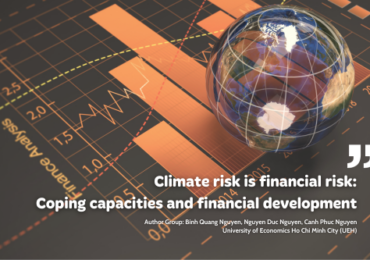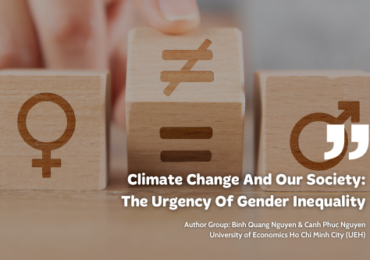[Research Contribution] Carbon Pricing: Global policy trend and adaptation strategies for businesses
18 February, 2025
As many countries and territories target carbon neutrality by 2050, carbon pricing policies are set to become a critical tool in reaching this goal. By proactively adapting to this global trend, businesses can optimize costs while also fulfilling the environmental expectations and demands of customers and investors.

Carbon pricing: Global policy trends
The first carbon tax was introduced by Finland in 1990. By May 2020, 82 carbon tax initiatives had been launched in 48 countries and territories worldwide.
Not limited to the individual policies of each country, the European Union began implementing carbon taxation in 2005. Subsequently, the Carbon Border Adjustment Mechanism (CBAM) was piloted starting October 1, 2023, and will be fully implemented from 2026. The mechanism will impose carbon taxes on certain goods imported to the EU, based on their production-related greenhouse gas emissions. Initially, CBAM will apply to six sectors: iron and steel, aluminum, cement, fertilizers, electricity, and hydrogen.
If a domestic carbon pricing system is implemented with industry emissions remaining at current levels, the EU’s CBAM alone could reduce Vietnam’s GDP by up to US$6.4 billion in 2030 and US$11.1 billion in 2035, according to the Ministry of Industry and Trade. The impact could be more significant if the EU expands its list of regulated goods, as it is a major export market for Vietnam.
In Vietnam, Decree No. 06/2022/ND-CP of the Government on the reduction of greenhouse gas emissions and protection of the ozone layer also stipulates the development roadmap and timing of implementing the domestic carbon market. Vietnam ranks 21st globally for carbon emissions, and besides exports, many industries also import raw materials and components from other countries. With carbon pricing becoming global policy trends, businesses must consider its impact on their operations and develop suitable adaptation strategies.
Adaptation strategies for businesses
There are several types of carbon pricing, with two commonly adopted by countries and territories around the world:
The first type is carbon taxes, which impose a direct cost on greenhouse gas emissions, requiring businesses to pay for each ton of carbon emitted. Therefore, this creates a financial incentive for companies to reduce emissions by adopting more efficient processes or cleaner fuels to lower their tax liabilities.
The Emissions Trading System (ETS), known as emissions cap-and-trade system, sets a cap on total greenhouse gas emissions from specific sectors and creates a market where emission allowances (in the form of permits) are traded. This approach enables polluters to meet emission reduction targets in a flexible and cost-effective manner.
With the two common carbon pricing types outlined above, there are three adaptation strategies for businesses to consider. First, they can adjust the scale of production, which in turn directly adjusts their total carbon footprint. Second, companies can invest in green initiatives to make industrial processes cleaner. Third, under the emissions trading system, they can manage and trade carbon credits for optimal efficiency.
Due to the flexibility in choosing adaptation strategies, the net emissions of companies change over time and depend on the choices they make.
Additionally, carbon tax is an extra expense added to operating costs. As such, businesses must manage compliance while staying informed on changes in carbon pricing policies across relevant countries and regions. This will help them assess the impact of the carbon tax on the final prices of their products and services and develop appropriate adaptation strategies.
However, carbon taxes can be difficult to track. For instance, under the European Green Deal, the EU allows each member state to determine how to implement carbon taxes and their own monitoring mechanisms. Data from 2019 reveals that while Norway’s carbon tax covers 60% of the country’s total emissions, Spain only taxes 3% due to the limited scope of its tax. Thus, to be more proactive, businesses need to anticipate carbon pricing policies and incorporate them into all their business processes from the outset. Experience suggests that companies should begin by integrating vertically across their supply chain—evaluating everything from sourcing, processing, and production to sales and logistics. With this approach, the product lifecycle assessment is very important.
It is also crucial to emphasize that the rapidly evolving carbon pricing policies are not necessarily a threat. Many businesses have seen the value in investing in low-carbon supply chains and cleaner technologies, as they not only gain intangible benefits but also take advantage of tax credits and subsidies offered by governments to promote investment in clean technologies.
At this stage, let’s delve deep into green investments. Bustamante and Zucchi (2023) examined two distinct types of green investments companies can pursue, with their respective advantages and disadvantages.
The first type focuses on investing in abatement projects to partially offset companies’ emissions. This means companies produce emissions during their production processes, and abatement projects work to “clean up” some of these emissions. Examples include tree planting or carbon capture and storage. While these projects immediately lower a company’s net emissions, they do not lead to structural technological changes.
The second type of green investment, green innovation, drives the transition to new, more sustainable technologies with long-term benefits—permanently making a company’s operations less polluting. While green innovation has a lasting impact on sustainability, it is more expensive than pollution abatement, requires lengthy preparation, and carries uncertain outcomes. As a result, coupled with the pressure to create value for shareholders on the basis of short-term financial reporting, polluting firms tend to favor short-term mitigation efforts over green innovation. This explains why governments worldwide have integrated subsidies for green innovation into their carbon pricing policies. Such subsidies not only encourage greater participation in green investments but also promote a shift toward supporting green innovation. For this reason, businesses must be aware of incentive opportunities, such as tax credits, cash grants, and other benefits available through government recovery programs globally, to maximize their advantage.
Transitioning towards long-term values
Corporate environmental responsibility has become a cornerstone of modern business strategy. Companies are increasingly pressured to demonstrate their commitment to sustainability—not just to meet legal requirements, but to align with consumer preferences and investor expectations.
Furthermore, the global shift toward carbon pricing policies does not necessarily reduce benefits for shareholders. Growing empirical evidence shows that the impact of climate regulations varies across businesses. Businesses that early adopt an adaptation strategy and proactively approach carbon pricing policies, rather than merely viewing them as a cost, can not only gain financial benefits such as reducing tax expenses, minimizing financial risks related to future carbon pricing mechanisms, and ensuring regulatory compliance, but also reap reputational value, enhance their position, attract customers, take advantage of incentive policies, and influence shareholder relations and perceptions of long-term value. Ultimately, this leads to improved revenue and profits.
According to a synthesis by Friede, Busch and Bassen (2015), up to 90% of empirical surveys indicate a positive relationship between sustainable business practices for long-term values and corporate financial performance. An analysis by KPMG (2018) using data from S&P Capital IQ over 15 years (2003-2017) revealed that companies prioritizing long-term goals significantly outperform those focused on short-term gains in terms of both revenue and profit (see Figures 1 and 2).
According to PwC’s latest 2024 Global CEO Survey, 45% of CEOs expressed concerns about their company’s long-term survival if they continue on their current path. This sense of urgency reflects a growing awareness of the need to change business strategies to adapt to policies addressing climate change, as well as other environmental challenges. The survey also indicates that CEOs are increasingly prioritizing climate-friendly investments. This demonstrates their willingness to make complex trade-offs in pursuit of long-term values. Such a shift is advantageous for implementing sustainable business strategies, as senior leaders’ recognition of long-term value is seen as a crucial factor for successful transformation.

However, in a country where 98% of businesses are small and medium enterprises like Vietnam, it may take more time for business leaders and owners to recognize that competitive advantages and market power are evolving. As such, realizing that focusing on creating long-term value for all stakeholders directly boosts benefits for shareholders and business owners may also take more time. In this context, training and communication are necessary to make business owners and shareholders understand that: a company’s competitiveness and profitability are increasingly dependent on ensuring the value aspects associated with stakeholders, such as human capital, natural capital, customer relationships, brands, partnerships and trust. According to Ocean Tomo’s survey in 2017, these intangible assets grew from representing 32% of company value in 1985 to 84% in 2017.
A critical question arises here: how can companies balance the pursuit of long-term value with the pressure to meet short-term objectives? The answer centers on several key points.
First, companies need to assess the two-way relationship: (i) how future social trends may influence the company’s development and financial performance; and (ii) what social and environmental impacts the business may have, and what risks and costs the company may incur in relation to creating those impacts.
Second, businesses should identify the necessary changes in their operations to capture opportunities and minimize risks posed by future social trends. At this stage, it is crucial to listen to stakeholders’ opinions to pinpoint areas that need adjustment. Additionally, leveraging data-driven insights is vital for making suitable decisions. Data can guide companies in adapting their strategies to align with both short-term market trends and long-term industry changes.
Third, businesses need to foster a change in corporate culture. Success in implementing necessary changes requires not only the CEO’s awareness but also the support of middle managers and the entire workforce.
Finally, companies should conduct scenario analyses to determine the optimal trade-off strategy and the appropriate “pace” of transformation based on their unique circumstances.
Conclusion
As countries and territories around the world work towards carbon neutrality by 2050, carbon pricing policies will increasingly become a key factor in achieving this objective. With the broader implementation of carbon pricing, businesses—particularly multinational corporations—will encounter a complex and rapidly evolving tax landscape that directly affects their operations. By proactively adapting to those policies, shifting business models to reduce carbon emissions, and leveraging carbon incentives, companies can ensure long-term business sustainability while meeting the environmental expectations of customers and investors. Is your business ready for this new era?
News and photos: UEH Sustainable Finance Institute

[Podcast] Recommendations for University education development
14 February, 2025
[Podcast] Developing Vung Tau into a World-Class Tourism City
16 January, 2025
[Podcast] Postdigital Design Strategies for Media Art
6 January, 2025
[Podcast] NFTs – Artistic Innovation or Just a New Hype?
27 December, 2024
[Podcast] Boosting Employee Creativity with Constructive Feedback
23 November, 2024
[Podcast] “Dutch Disease” in Remittances and the Case of Vietnam
4 November, 2024
[Podcast] Latest approaches for sustainable universities
11 July, 2024
Data Law – Part 1: Necessity for a New Approach
18 May, 2024
Advertising Evaluation on Tiktok Platform
14 May, 2024
[Podcast] Advertising Evaluation on Tiktok Platform
13 May, 2024
Promoting Learner Autonomy in English Language Learning (Part 1)
24 November, 2023
ArtTech And Sustainable Development
27 October, 2023
Motivation of EFL Vietnamese Students in Economics-related Majors
12 October, 2023
Climate Change And Our Society: The Urgency Of Gender Inequality
12 October, 2023
People Analytics in Vietnam
10 March, 2022
Revolution in Experimental Economics
30 January, 2022
The Sharing Economy: Governance Issues in Vietnam
24 January, 2022
Employment Policy For Ho Chi Minh City in Post-social distancing Period
28 December, 2021
Lifelong learning at UEH: Towards a Sustainable University
28 December, 2021
Building a Decentralized Stock Market based on Blockchain Technology
24 December, 2021
Consumer price index from big data mining perspective (Big data)
17 November, 2021
Overview Of Digital Currency – Part 5: DIEM Private Stabilized Currency
11 November, 2021










































































































































































































